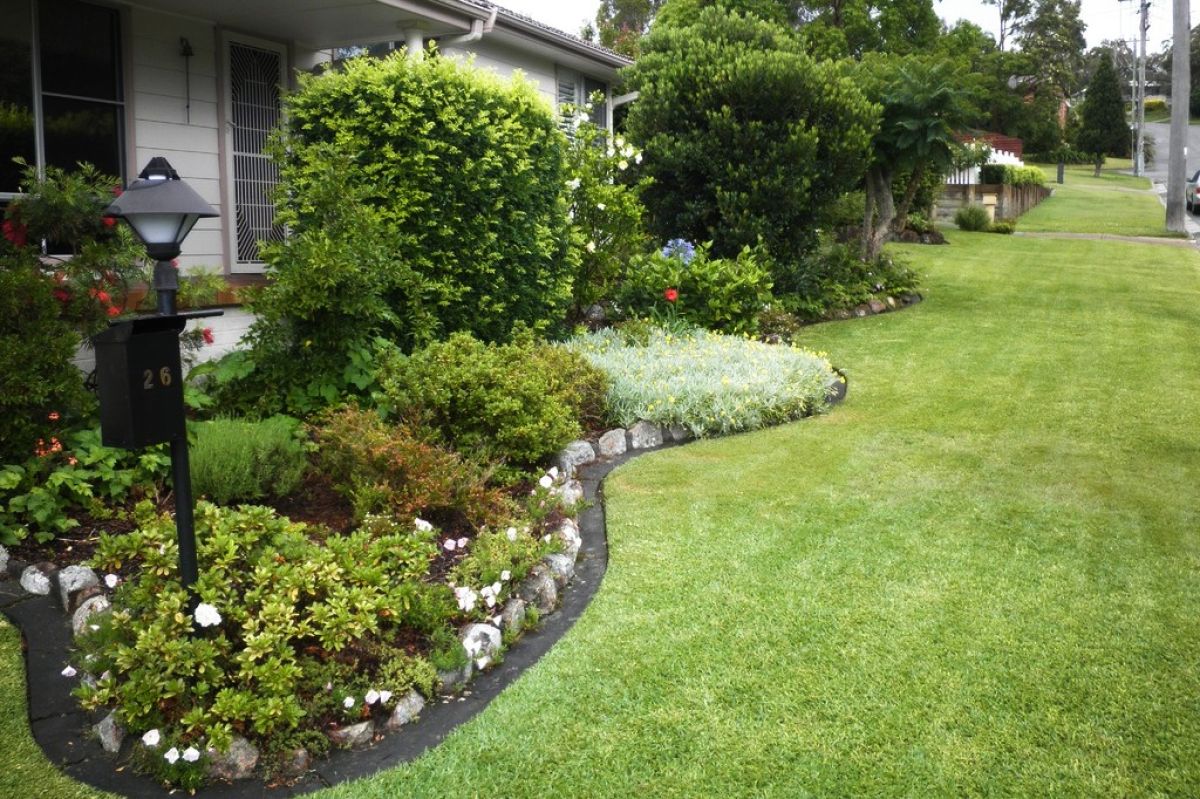Foundation plantings are American in origin and often are fairly predictable.
The plantings should look as if they are natural, not contrived, and should include shrubs and trees to provide varied heights, widths, hues, and textures. Plant enough items initially to soften the hard lines of a building, bearing in mind that they should be spaced to allow for growth and not overwhelm the structure when the plants mature and grow together.
Different hues of green and varied textures should be represented in the trees, shrubs, and plants, and the colors must harmonize with the colors of the building materials.
Select the largest herbaceous specimens that you can afford to plant initially, as it may take years otherwise for tiny little evergreens to mature to an appropriate size. Otherwise, you may have a large house with tiny little blobs of green lined up in front of the structure for a long time.
For ground cover, mass plants like astilbe, bleeding heart, Virginia bluebells, and plumbago in the area where the house will cast shade. When they bloom, they will provide a mat of color, which you can supplement with annuals. Plant at least one large flowering tree such as dogwood, redbud, or crabapple for shade, height, and color and seasonal interest.
This is Moya Andrews, and today we focused on foundation plantings.










